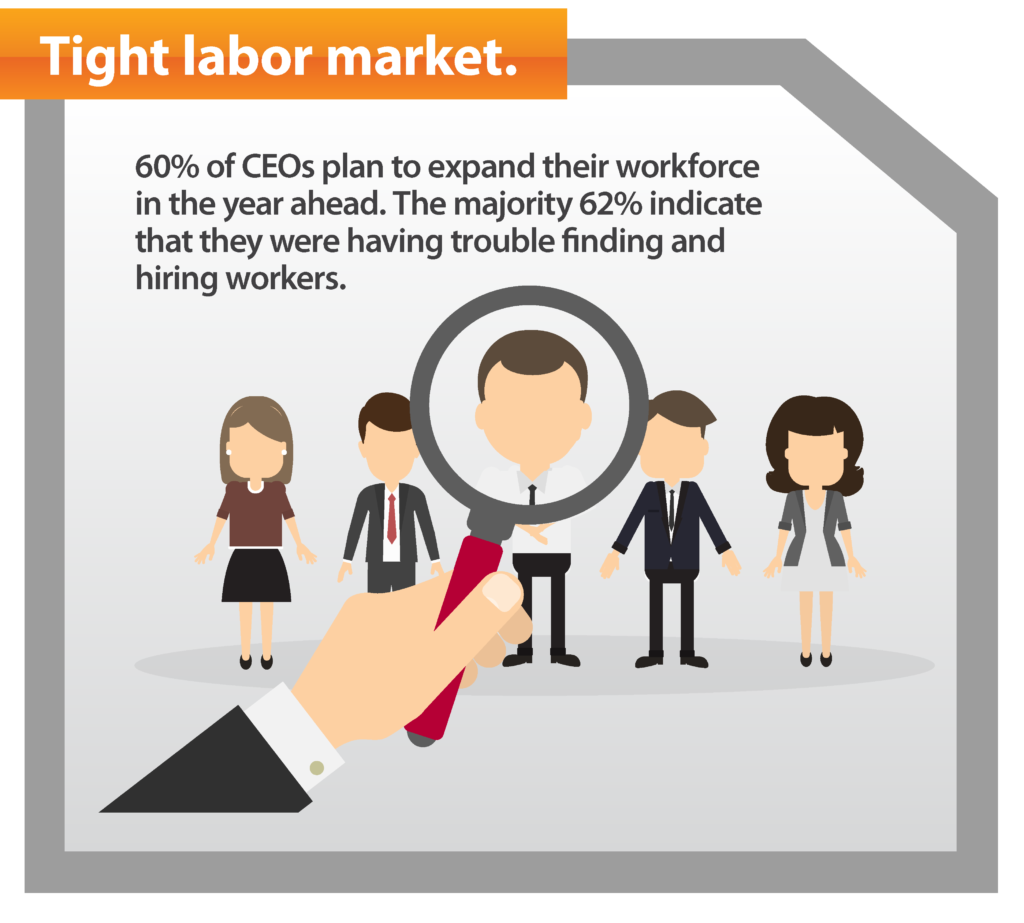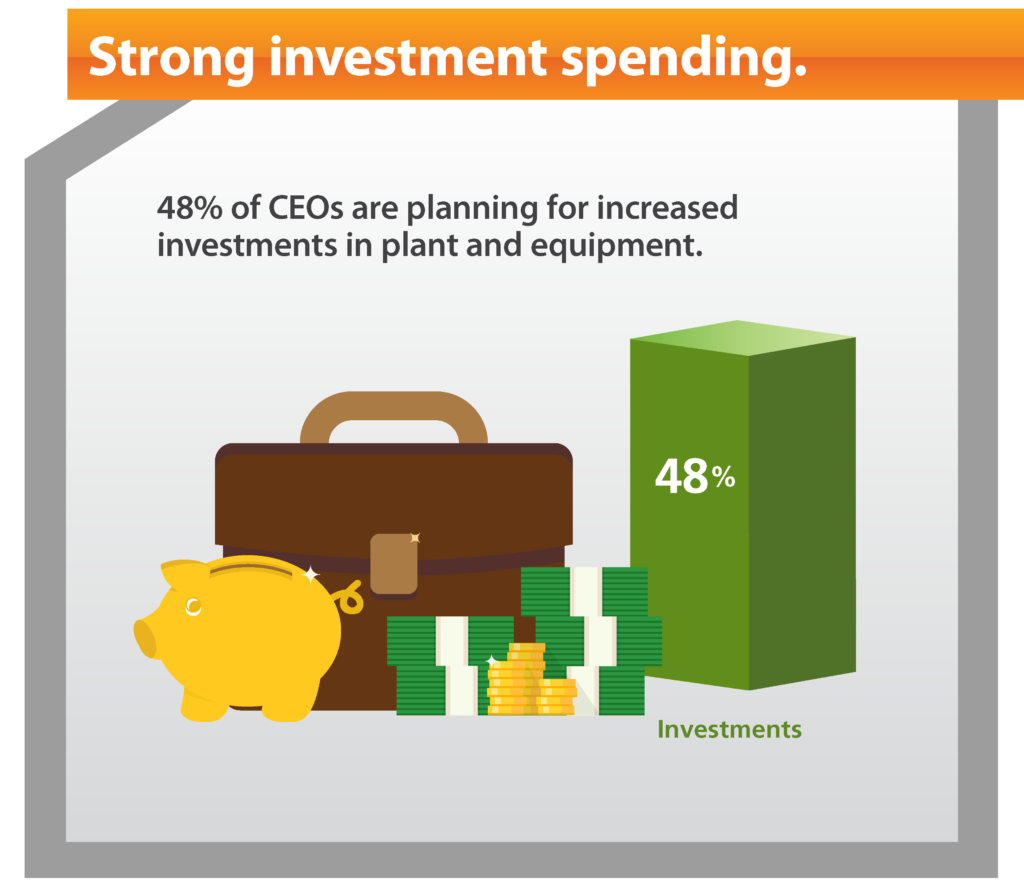CEO Confidence Index: Economic prospects weaken, but investment plans strong

Between the first and second quarters of 2017, the Vistage CEO Confidence Index dropped 3.8 points — from 106.9 in Q1 to 103.1 in Q2. However, the index is still 14.3 points higher than it was one year ago, when it measured 88.8 in Q2 2016.
The Q2 survey revealed a number of other insights about the current state of small and mid-size firms and the mindset of the CEOs running these companies:
Economy improves, but future prospects weakening
More than half of all CEOs (55 percent) said that the economy had improved. While that figure was slightly below last quarter’s 59 percent, it was more than double last year’s 21 percent. However, prospects about the future economy have weakened in the past several months. Only 38 percent of CEOs said that they expected the economy to improve, compared to 57 percent last quarter.
Interestingly, the majority of firms (58 percent) say that the uncertainty of future economic policies is not impacting their business. Only 16 percent say that the uncertainty was causing them to delay investments. Another 10 percent said that they were delaying hiring and 9 percent said that the uncertainty was reducing orders from customers.

Biggest challenge for firms is tight labor market
Sixty-two percent of firms reported that they were struggling to find and hire the workers that they needed, while one-in-five firms said that finding, hiring, training and retaining management talent was their top challenge. In response to this challenge, firms applied different solutions. Some offered higher wages (34 percent) or added benefits (13 percent), while others increased their training (28 percent) of new hires. Only 9 percent said they slowed the growth of their workforce to manage this challenge.

Investment spending holds strong
Consistent with the previous two quarters, nearly half of all firms (48 percent) reported plans to increase their plant and equipment investments. “Although firms have revised downward the extent of near-term growth, the robust data on investment spending suggests that firms still hold a favorable long-term outlook,” said Dr. Richard Curtin from the University of Michigan, who analyzed the survey results.

Expected revenues and profits remain relatively high
Among all small and mid-size firms, 73 percent said they expected revenue gains in the year ahead. This figure was slightly lower than the 77 percent reported last quarter and 78 percent reported two quarters ago. Profit expectations were similar in the Q2 survey. About 60 percent of all firms said they expected profits to rise, compared to 64 percent in the previous two quarters.
Category : Economic / Future Trends
Tags: CEO Confidence Index
